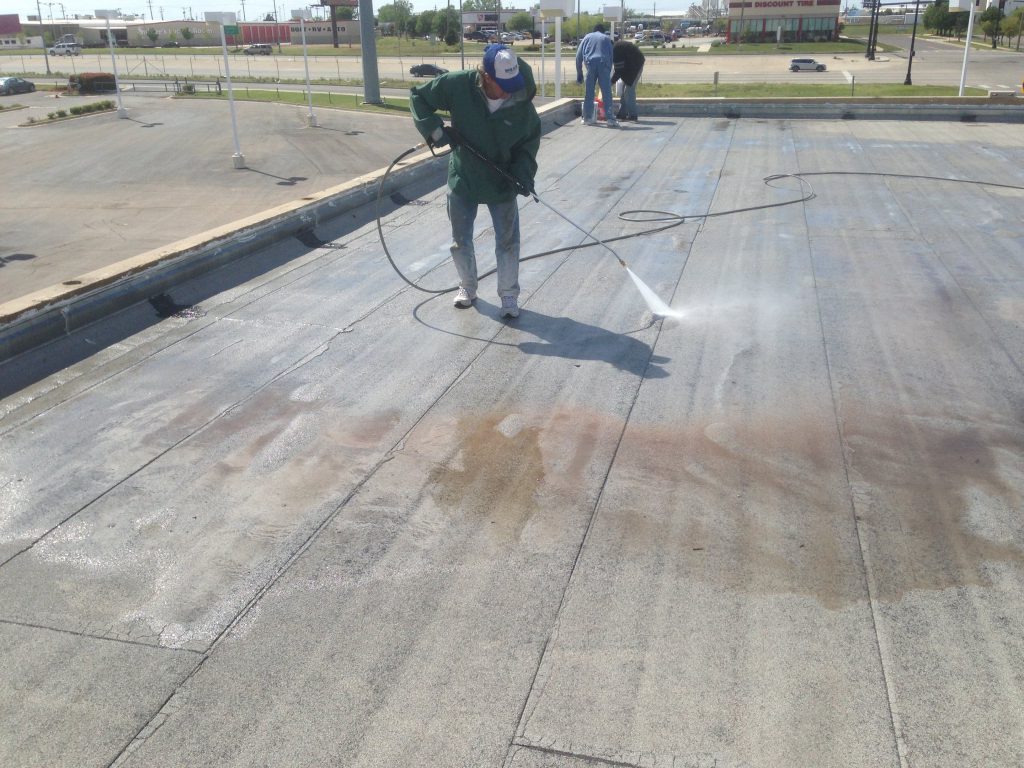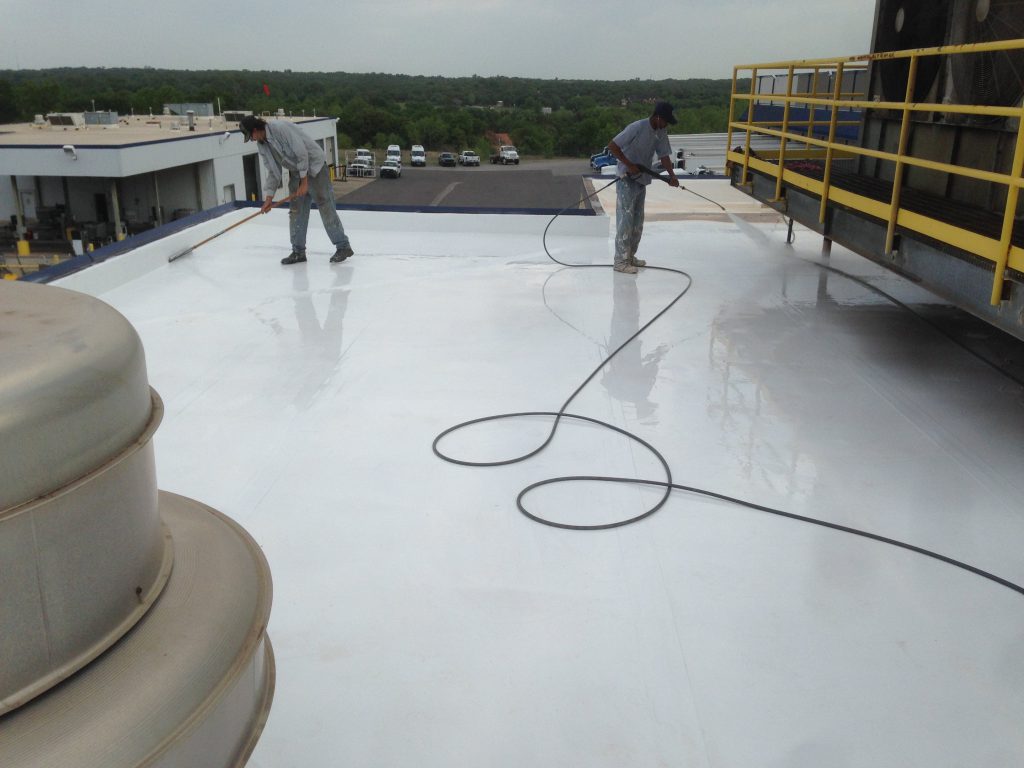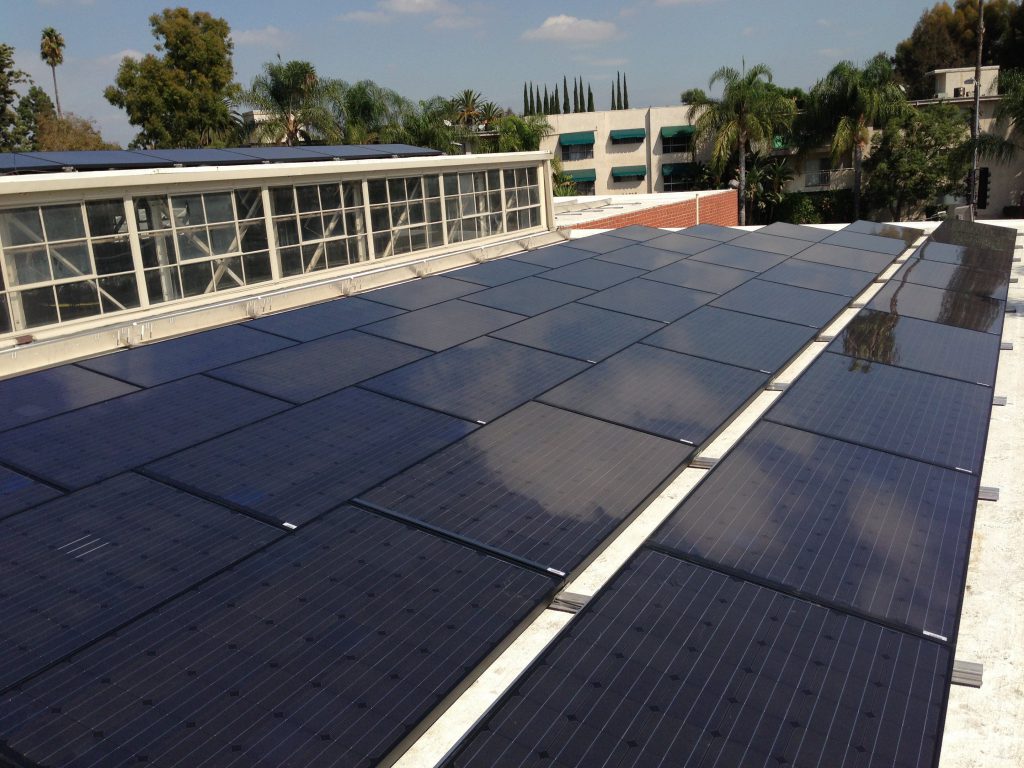Commercial rOOFING
SINGLE-PLY TPO
Known as the value-priced single-ply roofing, TPO roofing systems provide better performance characteristics and longevity than a modified torch system, yet a lower price than a single-ply PVC roofing system. TPO roofing systems, such as GAF or Carlisle, are perfect for new construction or re-roofing of low-slope commercial and residential roofs where superior performance is needed at a cost-effective price point. TPO systems are heat welded, providing good seam strength and puncture resistance, along with longer-term weathering than a traditional modified torch roofing system.


SINGLE-PLY PVC
One of our favorite roofing systems at Blue Angels Roofing, the thermoplastic single-ply PVC membrane system is the leading low-slope roofing application. Engineered to provide superior long-term performance and enhanced durability, these roofing systems are strong, flexible, highly reflective and carry the strongest warranties in the industry. With a high tear/puncture resistance and outstanding performance record in the most extreme climates, single-ply PVC roofing systems carry zero exclusions for ponding water making them ideal for virtually any low-slope roofing application, including garden roofs and rooftop decks.
WHAT IS A “COOL ROOF”?
A cool roof reflects and emits the sun’s heat back to the sky instead of transferring it to the building below. “Coolness” is measured by two properties, solar reflectance and thermal emittance. Both properties are measured from 0 to 1 and the higher the value, the “cooler the roof.”
Cool Roof Rating Council – CRRC website – click here


WHAT ARE THE BENEFITS OF HAVING A COOL ROOF?
Significantly reduces energy costs related to cooling a building
Energy represents 30% of the typical office building’s costs and is a property’s single largest operating expense
Energystar.gov Website – click here
Lower ambient temperatures – helps reduce “Urban Heat Island Effect”
Lower internal building temperatures, resulting in improved occupant comfort
Comply with codes and green building programs
MYTH VS. FACT – COOL ROOFING 101
Myth: A Cool Roof is great during the summer, but will increase my heating bill in the winter.
Fact: The roof is an insignificant source for heat gain in winter. While Cool Roof owners may pay slightly more to heat their homes, this amount is usually insignificant compared to the cooling energy savings during the summer. Why?
• In the wintertime, the sun is much lower in the sky and less intense. (Passive solar heating usually occurs from sunshine streaming through windows this time of year).
• There is a higher incidence of cloudy days, and in some regions the roof is covered in snow for long periods.
• Winter days are shorter (fewer hours of sunshine).
• A cool roof will not shed more heat proportionate to other types of roofing materials at night or on cloudy days. It will simply limit the amount of heat entering the building on hot summer days. (source: CRRC website FAQs)
COOL ROOF COATINGS
As a building owner or facility manager, you’re always looking for ways to save money and improve the quality of your facility. To that end, you need look no further than restoring your building’s existing roof with a cool roof coating. The installation of a cool roof coating will simultaneously extend the life of your roof, enhance your building’s comfort and dramatically reduce cooling costs. It’s what we in the business call a win, win, win.
It’s your building’s roof that takes the most beating from the sun’s radiant heat and UV rays. Left unattended, just a few years of thermal shock can lead to the accelerated aging of your roof membrane resulting in splits, cracks and finally failure. Our cool roof coating solutions can erase this aging almost doubling the life of your roof in the process.
All in all, a cool roof installation is one of the most beneficial and immediate ways to protect a major asset: Your roof. You’ll sleep better at night knowing you’ve taken a definitive step to improving your building and capitalizing on an almost guaranteed return on investment.
